Rocks:
Defined as: Natural solid massive aggregates of minerals which form the Earth Crust. Petrology
A professional Civil Engineer has to deal with the rocks during his work involving the planning, designing and management of the construction of Civil Engineering Projects which are laid on the rocks
Mining Engineers, Petroleum Engineers, Town Planners and Architects also deal with the rocks concerned with the area of their works, in addition to the Geo-Scientists
Rocks of the Earth Crust are divided into three main groups:
Igneous Rocks, Sedimentary Rocks and Metamorphic Rocks
We will study their: Composition, Texture, Structure, Classification,
Mode of Formation and Occurrence of the rocks
ROCKS: IGNEOUS ROCKS
Defined as: The rocks which are formed from the hot molten material – Magma (inside the earth) and Lava (when erupted through the volcanos on the earth surface) by the process of cooling, crystallisation and solidification of the rock material are known as Igneous Rocks
Extremely high temperature of the surrounding strata and molten material from which an igneous rock is formed, are the two important conditions for the origination of an igneous rock
The high temperature is mainly associated with (i) the high depth (ii) high heat energy released by the fission of the radioactive materials and (iii) huge heat energy content of mantle
The pure melt is mainly composed of liquid material and may have the solid, crystalline and gaseous fractions
This melt remain unchanged as long as the physical and chemical environment surrounding it remains unchanged
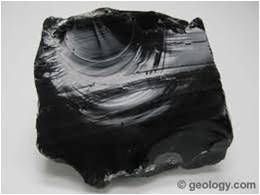

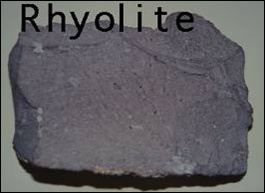
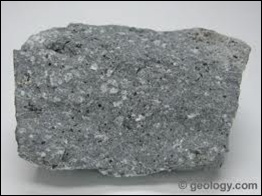
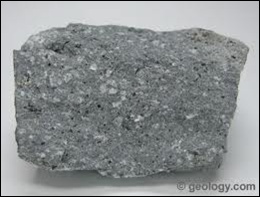

(1) Igneous Rocks are divided into Three Groups:
(a) Volcanic Igneous Rocks or simply Volcanic Rocks – also known as Extrusive Igneous Rocks or simply Extrusive Rocks
Formed on the surface or in the water i.e. above the earth - by cooling, crystallisation and solidification of lava erupted from the volcanos
Lava cools down very rapidly on the earth surface or in the water as compared to the cooling of magma inside the earth
These types of rocks are fine grained to very fine grained -they mostly look like blackish or greying glass in texture
Examples of some common Volcanic Igneous Rocks are:
Obsidian, Pumice (vesicular), Rhyolite, Andesite, Basalt, Trachyte, Scoria (vesicular) and Tuff (volcanic ash)
(b) Plutonic Igneous Rocks or simply Plutonic Rocks – also known as Intrusive Igneous Rocks or simply Intrusive Rocks
An Intrusive Igneous Rock is also called Pluton
Formed by cooling, crystallisation and solidification of magma inside the earth
Magma cools down very slowly
These types of rocks are coarse grained in texture
Found at considerable depth – usually between 7 to 10 km from the earth surface
Get exposed due to weathering or erosion
Examples of some common Plutonic Igneous Rocks are:
Granite, Diorite, Gabbro, Anorthosite, Granodiorite, Pyroxinite, Nephelinite and Monzonite
(c) HYPABYSSAL IGNEOUS ROCKS:
These are the igneous rocks formed at intermediate depth (than the previous two types of igneous rocks) – usually up to 2 km from the surface e.g. Porphyries (of various chemical composition) and Dolerite
Porphyries or Porphyritic Rocks are the igneous rocks which have relatively large isolated crystals known as Phenocrysts, embedded in a mass of fine texture known as Ground-Mass
Porphyritic Structure & Texture
Chemical Composition of Igneous Rocks: Silica, Alumina and oxides of Iron (silica being the most dominant and oxides of iron being the least) are the three major constituents of all the igneous rocks
Mineralogical Composition of Igneous Rocks:
Feldspar or Felspar, Amphibole, Pyroxene and Quartz (Feldspar being the most dominant and Quartz being the least) are the major constituents of all the igneous rocks
ROCKS: COMMON ROCK FORMING MINERALOGICAL CONSTITUENTS OF IGNEOUS ROCKS
Feldspar or Felspar: Any of a group of rock-forming minerals
Occurring principally in igneous plutonic rocks and in some metamorphic rocks too
About 60 percent of the earth crust is composed of feldspar
Amphibole: Any of a large group of igneous rock-forming minerals
Common in igneous and metamorphic rocks
Quartz: A very hard crystalline mineral of silica
Varieties of quartz are: Agate, Chalcedony, Chert, Flint, Opal and Rock Crystals
ROCKS: TEXTURE OF IGNEOUS ROCKS
Texture of igneous Rocks is determined by a number of factors e.g.
Size, shape and arrangement of the rock forming minerals
Speed and duration of cooling
Formation or non-formation of crystals
Viscosity of magma or lava
Types and percentage i.e. quantity of constituents present in the magma or lava
Degree of Crystallisation: In Igneous Rocks, all the constituent minerals may be present in distinctly crystallised form and easily recognised. These are of Three Types:
Holocrystalline: When all the constituent minerals are distinctly crystalline in nature
Holohyaline: When all the constituent minerals are very fine in size and glassy in texture or non-crystalline in nature
Merocrystalline: It is the intermediate condition of crystallisation of constituent minerals in the same rock
ROCKS: GRANULARITY OF IGNEOUS ROCKS TEXTURE
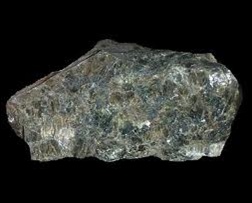
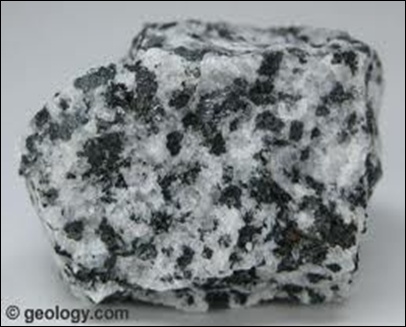

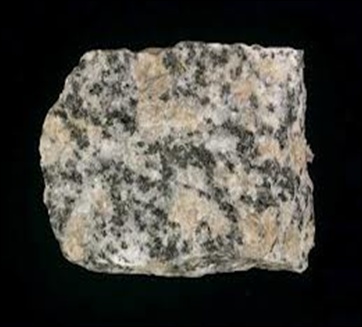

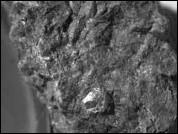
Granularity: It is the formation of the size of grains in a rock
Coarse Grained: Grain size: > 5 mm
Medium Grained: Grain size: 5 to I mm
Fine Grained: Grain size: < 1 mm
Types of Igneous Intrusions:
Intrusion: Movement or placement of magma in pre-existing rock within the earth crust – also known as Injection of Magma.
Pre-existing Rock is known as Host Rock and the intrusive igneous rock formed after the cooling and solidification of intruding magma is known as Intrusive Body
It is of Two Types: (i) Concordant Bodies (ii) Discordant Bodies
(1) Concordant Bodies: When the magma has been injected and cooled and solidified along or parallel to the structural plane / stratification of the Host Rock. These are of Four Types:
(a) Sill: When magma is injected along or between the bedding planes: Simple, Multiple and Composite Sills
IGNEOUS ROCKS: TYPES OF SILLS
Simple Sill: When there is a single injection of Intrusive Body
Multiple Sill: When there are two or more injections of Intrusive Bodies (of the same type of magma) parallel to each other
Composite Sill: When there are different Intrusive Bodies comprising different types of magmas in the same host rock
(ii) Phacolith: When the Intrusive Body takes the shape of crest and trough (like a wave) – known as Fold
(iii) Lapolith: When it takes the shape of less or more regular bowl or crescent, by arching down – known as Structural Basin
(iv) Laccolith: When it takes the shape of less or more regular dome or upward bulge with flat or concave base – known as Structural Dome
(2) Discordant Bodies: (i) Dykes or Dikes: These are the Columnar Intrusive Bodies which cut across the bedding planes or unconformities



